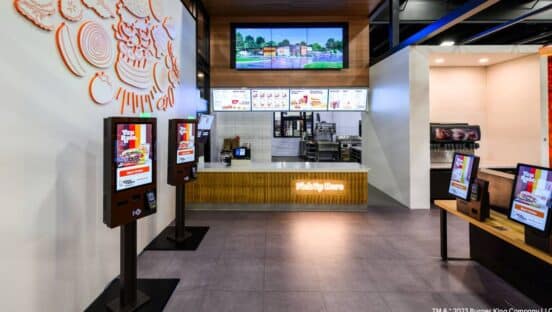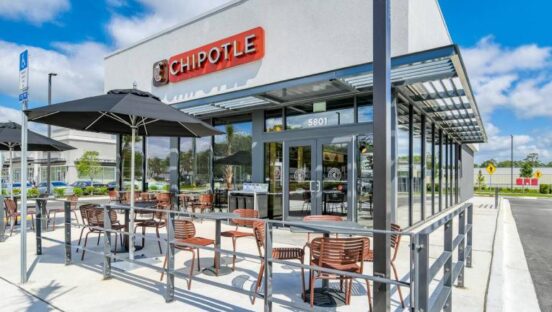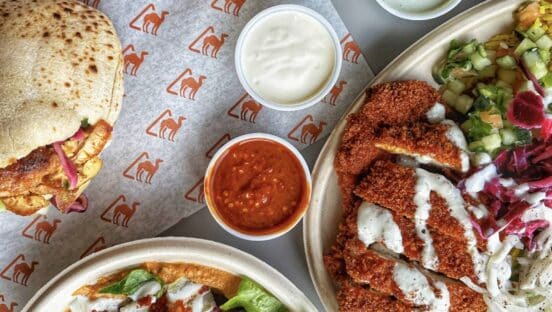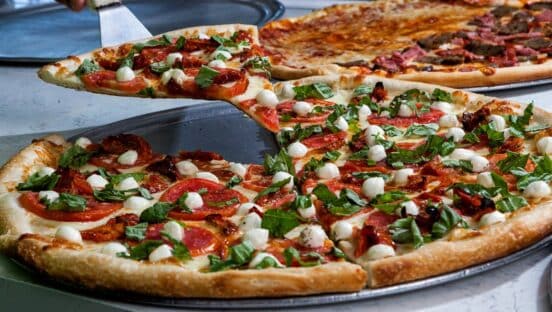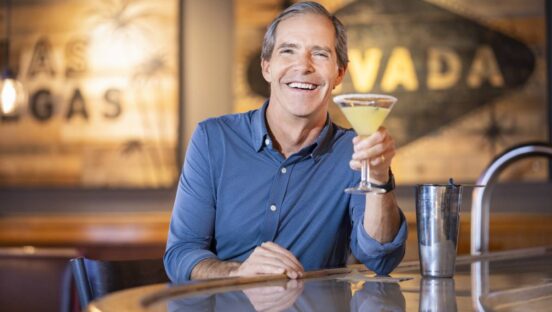For at least the past decade, millennials have been the darling of marketers, retailers, and media outlets. Shorthand for the generation that came of age around the turn of the millennium, the group formerly known as Gen Y reshaped markets far and wide, including the restaurant industry. Some might even argue that a number of enduring trends—cleaner ingredients, higher-quality options, the rise of fast casual—can be credited back to millennials.
But as with Gen Xers and baby boomers before them, millennials will soon relinquish their role as young, trendy influencers. The heir apparent? Generation Z, who like their predecessors answer to a number of names: iGeneration, Post-Millennials, and the Homeland Generation. In terms of media coverage, Gen Z is still something of a sleeping giant, but one that is starting to rouse. According to population estimates from Statista, the group (defined as being between ages zero and 19 in 2016) comprises a quarter of the total U.S. population. As the generation enters adulthood and the workforce, its influence will only compound.
“We hear a lot of people still talking about millennials and not realizing that Gen Z is so big,” says Marisa Allan, vice president of partner innovation at UNiDAYS, a United Kingdom–based firm that connects major brands to students across the globe. “One thing I’ve been known to say is, ‘Winter is coming; Gen Z is coming.’ It’s really time that operators start thinking about them.”
A brand of one
As a whole, limited-service restaurants already check several boxes on Gen Z’s wish list: convenient, affordable, experiential, customizable, and so on.
“They do like fast casual—someplace where they can hang out. A place where they can sit and it’s comfortable; it’s cool and hip,” says Desiree Le, cofounder of California-based Cauldron Ice Cream. “If you go to a [full-service] restaurant, it’s a little bit different. You have a server and you’re kind of going with the ambiance of the restaurant, but in fast casual, they can do whatever they want, pretty much.”
As Gen Zers grow up and begin making independent purchasing decisions, media attention, market research, and advertising campaigns will undoubtedly orbit around them. Restaurants are positioned to win big with Gen Z, but success is not guaranteed.
To connect with these young consumers, brands must understand their values, go to the digital platforms they frequent, and then engage them on their native turf.
As with millennials, Generation Z isn’t so clearly defined; some demographers point as far back as the mid-1990s for its start, while others go as late as 2001 or even 2005. But even with a decade-wide margin of error, certain similarities pervade, along with characteristics that have carried over from millennials. For Gen Z, the biggest shift might be less about their preferences and tastes and more about the role brands play in their everyday lives.
“With every generation, there’s always a little twist on what came before them. Some of the things we see and believe will continue is the emphasis around fresh and the emphasis around authenticity in foods, but it looks like Gen Z is putting a little twist on what authenticity might mean. For them, the definition might be a little bit broader,” says Darren Seifer, food and beverage analyst with The NPD Group. He adds that many people within that generation think of themselves as a brand, which plays into what types of products and services they seek out. This, in turn, puts a greater burden on the companies. “Instead of making people come into alignment with a mass-marketed brand, what this generation is asking is for [companies] to come into line with them,” Seifer adds.
Rather than young consumers flocking to trendy brands as in years past, companies must crowd around those consumers who are already creating their own trends.
One major chain that has excelled in this strategy even before the advent of Gen Z is Taco Bell. The Mexican fast-food leader has, in essence, turned the keys over to the consumers.
“We always say this, but we don’t own our brand anymore. They own our brand,” says Rob Poetsch, senior director of public relations at Taco Bell. “They don’t just buy our brand; they buy into the brand.”
And indeed there is no shortage of ways to buy into the Taco Bell brand. Last summer, the company teamed with ride-share app Lyft to pilot-test “Taco Mode,” in which users could add a drive-thru pit stop to their trip. Just a couple months later, it partnered with OpenTable for a special Bell & Breakfast event in which customers could reserve a spot to try the new Naked Egg Taco two weeks before the national rollout. And in October it teamed up with Forever 21 for a collection of branded apparel, which Poetsch says sold out within hours.
What’s interesting about Taco Bell’s approach is that it doesn’t target a particular generation, but rather an aspirational age. It is through this strategy that the brand has remained ageless, continuing to capture the youth vote decade after decade.
“Think about it less as a demographic approach and more of as a mindset. … When you’re a teenager, you want to be 20-something—that’s the sweet spot, that’s the age. And when you’re 30-something, you want to be 20-something again,” Poetsch says, adding that this proclivity continues into one’s 40s, 50s, and beyond. “It doesn’t really matter what that generation is, because it will shift, and there will be a next Gen Z. There is no finish line to being relevant with that group.”
Savvy, not superficial
Gen Zers and millennials before them may seem unique, but businesses have always been enamored with the young. As Poetsch puts it, “youthful” often embodies innovation. And with half of Taco Bell’s customers being 35 or older, the hope is that winning customers at an early age will translate into lifelong patronage.
At present, Gen Z demonstrates less loyalty than its elders. According to management consultancy Accenture, less than 38 percent of its members frequent a single grocery store, compared with 55 percent of older millennials. But, given how young even the oldest members of Gen Z are, it’s possible they’ll become more brand steadfast as they age.
“Now is when [young people] start to develop those lifetime affinities,” UNiDAYS’ Allan says. “This is the first time in their lives that they’re making independent decisions on where they’re going to eat, where they’re going to shop, things like that. What we tend to see is that loyalty grows over time.”
Within Gen Z’s set of values, authenticity is non-negotiable. And with virtually infinite information available at their fingertips, they can easily sniff out any form of deceit.
“If you’re trying to lie to them or thinking about tricking them … they’ll call you out on it right away, because they have so much information available to them,” Cauldron’s Le says. “They’re loyal if you are honest with them, but in a second they can go to anyone else.”
She and partner Terence Lioe opened the first Cauldron Ice Cream in Santa Ana, California, in 2015. The concept specializes in all-natural, small-batch ice cream served in puffle cones—Hong Kong–style egg waffles that resemble bubble wrap. From the start, the founders knew Gen Z would be a key customer base for Cauldron, and so they went to the spaces that generation frequented—namely, social media.
Early on, when Le and Lioe were working on a shoestring budget, they managed the social media and marketing strategy themselves. Even though the product—brightly hued ice cream nestled in a pillowy cone—was an Instagram dream, it did not exempt the brand from making daily, concerted efforts to engage on those platforms.
Cauldron has since hired a marketing team to focus solely on that side of the business, which should prove a worthwhile investment; the brand has two locations up and running, a third corporate store under construction, and franchise deals in the pipeline for California and Canada.
But Le is quick to point out that pretty pictures and a strong engagement strategy are only part of a winning formula. She says it’s a common misconception that Gen Zers are superficial since they are drawn to visually dazzling and adventurous menu items. But if the quality doesn’t measure up to the hype, they won’t make repeat purchases.
“A lot of restaurants might try to do this crazy, over-the-top menu item like a whole cake on top of a milkshake,” Le says. “[Gen Zers] are willing to spend their money, but they don’t have a lot of it yet; they’re still young. They have to be choosy about what they decide to spend their money on. So if it’s not an item that they deem worthy of their money, then they won’t go back to you again.”
Have it their way
As patrons of both fast food and fast casual, Gen Zers are willing to spend their limited dollars on dining out. The caveat is that restaurants must meet their relatively high standards, both in terms of the food and the experience.
For starters, these young consumers gravitate to casual spaces where they can socialize with friends and hang out for long stretches of time. Coffeehouses have long been a “fourth space” for people to gather, and now other restaurants are working to cultivate that same vibe. In fact, it’s one reason Cauldron Ice Cream has introduced a coffee program. Not only will coffee help reach a broader consumer base—since, as Le points out, few can eat as much ice cream as teens do—but it also encourages guests to linger.
Although traditional fast food lacked the formality of servers, the spartan interiors were hardly conducive for longer visits. After all, the segment was founded to provide convenience and speed rather than a community space. Perhaps it is another reason Taco Bell demonstrates an edge on fellow major chains with respect to Gen Z. Poetsch says the brand has data showing that it is one of the top social brands; it’s much more likely customers will go to Taco Bell with friends than alone.
“I think that’s part of what we like to home in on,” he says. “How do we create and leverage a social experience? How are we fueling the cult of the brand?”
Even though Taco Bell is expanding its delivery program and adding self-ordering kiosks, the chain is also enhancing the in-store atmosphere. Taco Bell Cantina locations continue to crop up in urban areas around the country, while suburban stores are being retrofitted with more community-focused designs.
Marcie Merriman is a cultural strategist at professional services and accounting firm Ernst & Young. She has written a number of reports on Gen Z and believes them to differ greatly from millennials, with whom they are often erroneously lumped together. For one, this new generation has grown up in a particularly turbulent world. As a result, they find comfort and a sense of community in dining out.
The flipside is that Gen Zers also expect change—meaning a successful Gen Z strategy will always be a moving target.
“This generation has literally never had stability. They were born into everything from world terror to war to recession to gun violence in schools. It’s just their MO,” Merriman says. “They’re constantly looking for something that’s different and new and fresh. For these restaurant brands and chains to continue to win them, they’ve got to constantly be giving them something different.”
And unlike the youth of yesteryear, Gen Zers don’t follow the crowd; Le says they would rather be among the first to discover the next hot trend.
Unintentional foodies
That adventuresome spirit extends to the palate. Whereas the vast majority of millennials grew up on burgers, pizza, and the occasional burrito, this new group is comfortable with an array of global cuisines. NPD Group’s Seifer even calls them “unintentional foodies” since they came of age when food and food culture were on the upswing.
San Francisco–based Curry Up Now is on a mission to bring fine-casual Indian fare to the masses, and Gen Z might just be its biggest proponent.
“They’re not spice-averse at all. They’ve grown up eating slightly more spicy food, slightly oily food,” says founder Akash Kapoor. “To them, comfort just doesn’t mean a good-ol’ mac and cheese or something. They could have different comfort foods from other countries. It’s kind of cool to see that.”
Kapoor is the father of two middle school–aged daughters. When their school conducted a survey asking students and teachers to select their favorite restaurant, Curry Up Now came in first place. He concedes that his daughters may have had some influence, but he also thinks the brand’s extended reach—thanks to delivery service DoorDash—is bringing its mix of street food–inspired Indian bites to families across the Bay Area.
In addition to far-reaching flavors, Gen Z also takes notice of the ingredient list. When NPD posited the question as to how much clean eating affects the overall quality of one’s life, 55 percent of survey participants aged 18–24 said very much, as compared to 42 percent of 24–34-year-olds, 36 percent of 35–54-year-olds, and only 26 percent of those 55 or older.
But that does not preclude Gen Z from taking part of food indulgences. For them, authenticity outweighs even quality.
“They’ve been trained through school, through parents, but also from what they have access to on their own about the importance of real ingredients, about eating healthier. Whether they always go with it or not, it’s something that’s been ingrained into their psyche,” Ernst & Young’s Merriman says. “One thing that I’m seeing with this generation across the board is their natural skepticism and questioning everything.”
Poetsch says Taco Bell was one of the first brands to post all of its ingredients and allergen information online. So while Nacho Cheese Doritos Locos Tacos Supreme will never fall into the healthy foods category, the company is straightforward with its nutrition information.
As Kapoor puts it, “honest food” is more important than labels like “organic.” Nevertheless, he does see Gen Z pushing the food industry in a more healthful direction. He credits millennials for moving major fast-food chains like McDonald’s toward serving a more natural burger and predicts this trend will only continue.
“This demographic is going to take us to where food should be,” Kapoor says. “I think we’re going to be moving back toward … the more old-school way that food was made and distributed.”
The rising tide
Merriman also foresees Gen Z leaving an indelible mark on foodservice and the consumer market writ large. For millennials, the push was for more environmental protections in food and beyond, she says. Gen Z, on the other hand, is picking up the mantle with social causes, whether they be fair wages, improved working conditions, or responsible business practices.
“It’s the evolution of culture. Each generation has their cause,” Merriman says. “The cause that their generation owns is going to be about human equality and fairness. I think that’s where they’ll look deeper at things, whether it’s the products, how they’re made, the employment, the workforce, how they’re treated—all of these things have become really important.”
To that same point, Cauldron’s Le has found Gen Z to be quite inclusive of others, across gender, age, race, ethnicity, and culture. It’s no wonder; this set of young adults represents the most diverse U.S. population to date. According to data from Nielsen, Hispanics account for 22 percent of the generation, with African- and Asian-Americans comprising some 15 and 5 percent, respectively.
Of course, generational groupings are nothing more than a rough cheat sheet for understanding what’s coming down the pipeline. There are the residual habits of predecessors, current economic conditions, and other clues that market researchers try to divine, but no one can predict the future.
Gen Z is just now coming into full view. Early indicators suggest its members are enthusiastic, if not discerning, in their food and retail preferences. They value authenticity and new experiences above all else.
It’s a good enough sketch for the time being, but for restaurants—and every other business—to stay relevant, they will have to learn from Gen Z and embrace change, time and time again.
“The youth within our society have always been the drivers of change and trends,” Merriman says. “Five years ago, that just happened to be a millennial because that was the generation that was at that point. Now we have Gen Z. … If you can meet their needs, then you’re going to please everybody else.”



